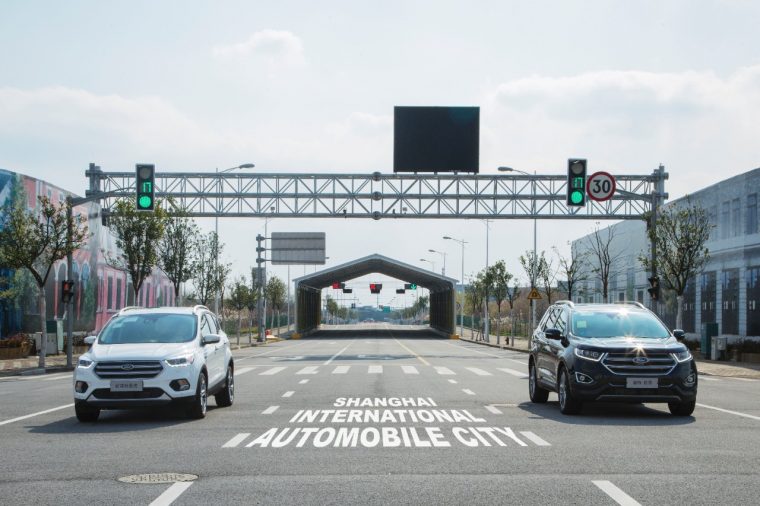Ford Testing Two Innovative Intersection-Friendly Technologies in Shanghai
Ford this month will begin testing new technologies, including “Left Turn Assist” and “Traffic Light Optimal Speed Advisory,” at the Shanghai International Automobile City. This testing will allow Ford to continue to research and develop these technologies for potential applications in future Ford vehicles.
Ford is aiming to implement these technologies in next-generation vehicles as a means “to help drivers easily and safely navigate through busy intersections in congested cities.” Left Turn Assist will utilize vehicle-to-vehicle technology to exchange information pertaining to oncoming traffic when a driver is preparing to make a left turn.
Traffic Light Optimal Speed Advisory uses vehicle-to-infrastructure communications to provide drivers with a recommended speed that will help them optimize fuel economy and even avoid sitting at lights. This technology was previously announced by Ford of Europe as its Green Light Optimal Speed Advisory; that feature is currently being field tested on public and closed roads in Milton Keynes and Coventry.
“Asking ourselves what would make drivers’ lives less stressful, we continuously explore new features that can help them navigate through traffic more easily and safely,” said Trevor Worthington, Ford vice president, Product Development, Asia Pacific. “The Shanghai International Automobile City provides a setting where we are able to develop, test, and refine future connected vehicle technologies. We will simulate some of the challenging conditions, knowing that most cars on the road at this time will not be connected. We look forward to using the facility to continue our pursuit of providing a safer and more pleasant driving experience in China.”
Ford chose to test these technologies in Shanghai due not only to the fact that China is the world’s largest market for automobiles, but because data from the Shanghai United Road Traffic Safety Scientific Research Center suggests that 89% of side impact collisions take place at intersections.

The News Wheel is a digital auto magazine providing readers with a fresh perspective on the latest car news. We’re located in the heart of America (Dayton, Ohio) and our goal is to deliver an entertaining and informative perspective on what’s trending in the automotive world. See more articles from The News Wheel.



